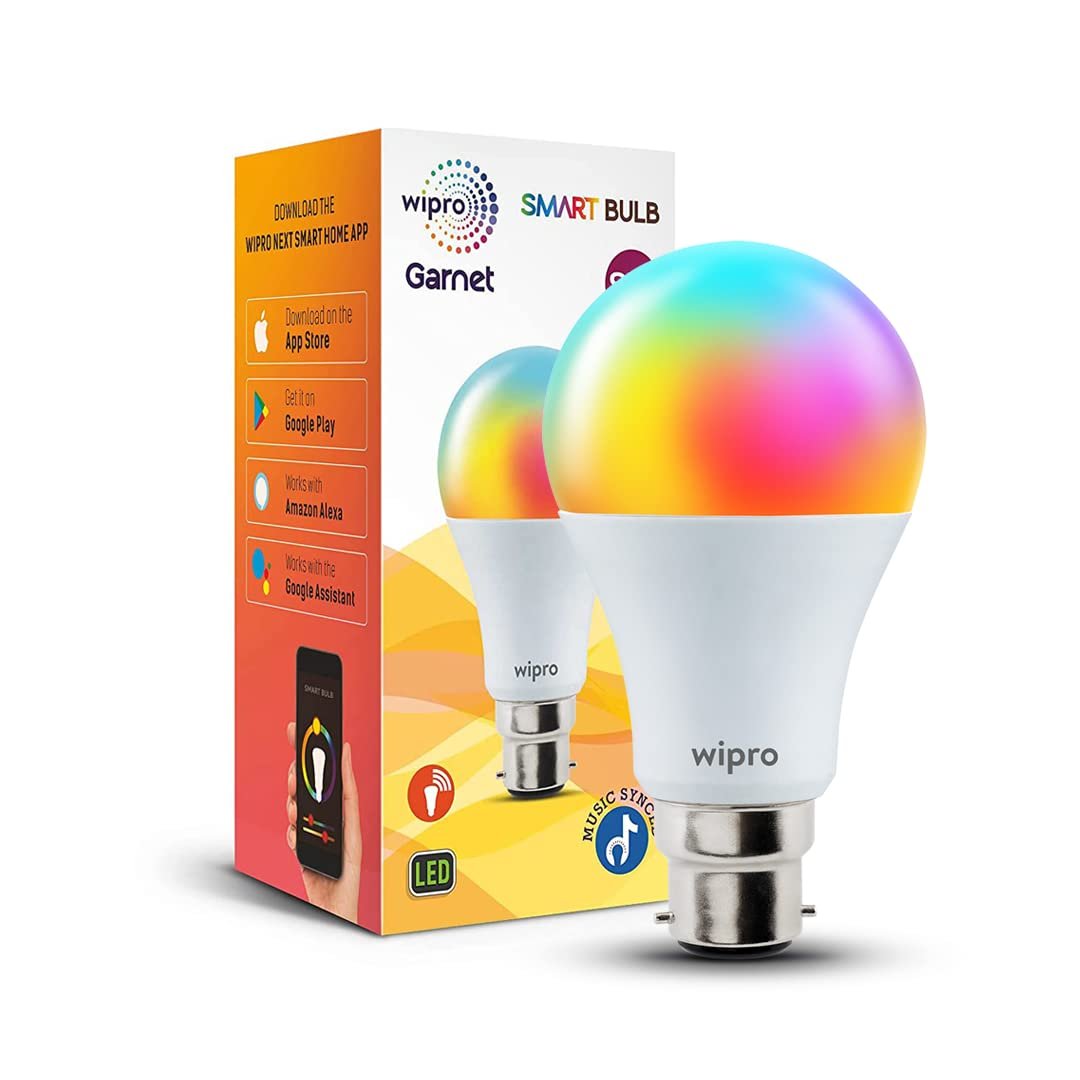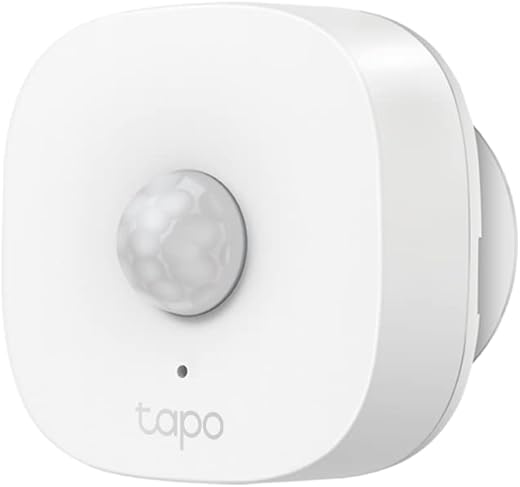
Are you tired of fumbling around in the dark to find the light switch? Or maybe you’re just looking to add a touch of modern technology to your home. Whatever your reasons, we understand the desire to install smart lighting in your home. It’s a convenient and stylish way to control your lights with ease. But we also know that the installation process can be daunting, especially if you’re not familiar with the technology. That’s why we’re here to help. In this blog post, we will walk you through the process of installing smart lighting in your home, step by step. We’ll explain the benefits of smart lighting and provide all the information you need to get started. So, let’s dive in and turn your home into a smart lighting haven!
Top-rated smart lighting products for a modern and efficient home
What is smart lighting?
Smart lighting refers to a lighting system that can be controlled remotely through a smartphone, tablet, or voice command. Unlike traditional lighting systems, which require manual operation, smart lighting offers a convenient and innovative way to control lighting in your home. Let’s explore the features and benefits of smart lighting and why it has gained popularity among homeowners.
Features of Smart Lighting
Remote Control
One of the key features of smart lighting is its ability to be controlled remotely. With the use of a compatible mobile app, you can turn your lights on or off, adjust their brightness, and even change their color from anywhere in your home or even when you are away. This feature ensures convenience and allows you to create the perfect lighting ambiance for any occasion.
Integration with Voice Assistants
Smart lighting systems often integrate with popular voice assistants like Amazon Alexa, Google Assistant, and Apple HomeKit. This means you can control your lights using simple voice commands, making it even more convenient and hands-free. For example, you can say, “Hey Google, turn off the living room lights,” and the lights will instantly respond.
Automation and Scheduling
Smart lighting systems offer advanced automation capabilities. You can set up schedules to turn your lights on or off at specific times, creating the illusion of someone being home even when you’re away. Additionally, you can program your lights to gradually brighten in the morning to mimic the sunrise or dim in the evening to promote relaxation and sleep.
Customization and Scene Setting
With smart lighting, you can create personalized lighting scenes or presets tailored to different moods or activities. For instance, you can have a “Movie Night” scene that dims the lights, sets the color temperature to a warm hue, and activates accent lights to enhance your movie-watching experience. These scenes can be easily activated with a single tap or voice command.
Benefits of Smart Lighting
Energy Efficiency
Smart lighting systems are designed to be energy-efficient. LED bulbs, which are commonly used in smart lighting setups, consume significantly less energy than traditional incandescent bulbs. Additionally, the ability to control and automate your lights ensures that you only use lighting when needed, resulting in reduced energy consumption and lower electricity bills.
Convenience and Flexibility
The convenience and flexibility offered by smart lighting cannot be overstated. Whether you’re lounging on the couch or away on vacation, you have complete control over your lights, allowing you to create the ideal lighting environment without physically interacting with switches. Moreover, the ability to control your lights remotely adds an extra layer of security by giving the impression that someone is always present at home.
Personalization and Ambiance
Smart lighting allows you to personalize your home’s lighting to suit your preferences and create the desired ambiance for different activities. Whether it’s a cozy evening dinner, a party, or a productive work environment, you can easily adjust the lighting to match the mood and occasion. Some smart lighting systems even offer color-changing capabilities, enabling you to experiment with a wide range of colors and effects.
Integration with Other Smart Devices
Smart lighting systems can seamlessly integrate with other smart devices in your home, such as smart thermostats, security systems, and entertainment systems. This integration allows for enhanced automation and coordination between different systems. For example, you can set up a “Good Morning” scene that not only turns on the lights but also adjusts the thermostat and starts playing your favorite morning playlist.
Factors to consider before installation
Smart lighting can transform your home into a modern, convenient, and energy-efficient space. However, before you dive into the installation process, there are several important factors you need to consider. These considerations will ensure that you choose the right smart lighting system for your needs and make the installation process smooth and hassle-free. In this article, we will discuss three key factors that you should keep in mind: compatibility, technology, and automation level.
1. Compatibility with Existing Light Fixtures
One crucial factor to consider before installing smart lighting is the compatibility of the system with your existing light fixtures. While most smart lighting systems are designed to work with standard light bulbs and fixtures, it’s essential to check if they are compatible with the specific types of bulbs and fixtures you have in your home.
Here are a few compatibility aspects to consider:
- Bulb Types: Ensure that the smart lighting system supports the bulb types you currently have or plan to use. For example, if you have dimmable LED bulbs, make sure the smart lighting system is compatible with dimmable LED bulbs.
- Fixture Types: Some smart lighting systems may not be compatible with specialized fixtures, such as recessed lighting or pendant lights. Check if the system supports the types of fixtures you have in your home.
- Voltage Compatibility: Verify if the smart lighting system is compatible with the voltage in your home. Some systems may only support specific voltage levels, so it’s important to ensure compatibility for proper functionality and safety.
By considering these compatibility factors, you can avoid any issues or limitations when integrating smart lighting into your existing setup.
2. Choosing the Right Smart Lighting Technology
When it comes to smart lighting, there are various technologies available, each with its own set of features and benefits. Understanding the different options will help you make an informed decision based on your preferences and requirements. Let’s explore three popular smart lighting technologies:
a. Wi-Fi Based Systems
Wi-Fi based smart lighting systems connect directly to your home’s Wi-Fi network, allowing you to control the lights using a smartphone app or voice commands. These systems are often easy to set up and offer a wide range of features. Some notable examples include:
- Philips Hue: One of the most popular smart lighting brands, Philips Hue offers a wide range of Wi-Fi enabled bulbs, switches, and accessories. Their system integrates seamlessly with voice assistants like Amazon Alexa and Google Assistant.
- LIFX: LIFX bulbs connect directly to your Wi-Fi network without the need for a separate hub. They offer vibrant colors and impressive brightness levels, making them a popular choice for those looking to create dynamic lighting scenes.
b. Zigbee Based Systems
Zigbee is a wireless communication protocol that allows smart devices to connect and work together seamlessly. Zigbee based smart lighting systems often require a central hub to control the lights. Here are a couple of notable examples:
- Philips Hue (Zigbee Version): Philips Hue also offers a Zigbee version of their smart lighting system, which requires their Hue Bridge hub for control. This system provides greater stability and range compared to Wi-Fi based systems.
- SmartThings Hub: Samsung’s SmartThings Hub is a versatile device that allows you to connect and control various smart home devices, including Zigbee based smart lights. It provides a unified control center for all your smart devices.
c. Bluetooth Based Systems
Bluetooth based smart lighting systems connect directly to your smartphone or tablet without the need for additional hubs or bridges. While these systems may have limitations in terms of range, they offer simplicity and ease of use. Notable examples include:
- Philips Hue Bluetooth Bulbs: Philips Hue offers Bluetooth-enabled bulbs that you can control directly from your smartphone using their app. This is a great option for those who only need smart lighting in a small area or want to start with a basic setup.
3. Determining the Level of Automation You Desire
Another factor to consider is the level of automation you desire from your smart lighting system. Some people prefer basic manual control, while others want advanced automation features. Here are a few automation options to consider:
- Scheduling: Many smart lighting systems allow you to schedule lights to turn on or off at specific times. This feature is useful for creating a well-lit home when you arrive or making it appear occupied when you’re away.
- Motion Detection: Some smart lighting systems can detect motion and automatically turn on the lights when someone enters a room. This feature is convenient for areas like hallways or bathrooms, where you may not want to fumble for a switch in the dark.
- Integration with Other Smart Devices: If you have other smart devices in your home, such as smart thermostats or security systems, consider if the smart lighting system can integrate and work together with them. This integration can unlock powerful automation scenarios, such as turning off all lights when you arm your security system.
By determining the level of automation you desire, you can choose a smart lighting system that aligns with your lifestyle and enhances the comfort and efficiency of your home.
In conclusion, before installing smart lighting in your home, it’s essential to consider compatibility with existing light fixtures, choose the right technology, and determine the desired level of automation. By taking these factors into account, you can select a smart lighting system that seamlessly integrates into your home and provides the convenience and energy savings you desire.
Step-by-step installation guide
Installing smart lighting in your home can enhance the ambiance, convenience, and energy efficiency of your space. In this step-by-step guide, we will walk you through the installation process, covering everything from setting up a smart lighting hub to configuring the system through a dedicated app. Let’s get started!
1. Choose the Right Smart Lighting System
Before diving into the installation process, it’s crucial to select the right smart lighting system for your needs. Consider factors such as budget, compatibility with your home’s existing wiring, and the features you desire. Here are a few popular options:
- Philips Hue: Known for its reliability and extensive range of products, the Philips Hue system offers a wide variety of smart bulbs, light strips, and accessories.
- LIFX: LIFX bulbs are Wi-Fi enabled, eliminating the need for a separate hub. They offer vibrant colors and easy integration with voice assistants like Alexa and Google Assistant.
- Nanoleaf: If you’re looking to add a touch of creativity to your lighting setup, Nanoleaf’s modular light panels are an excellent choice. These triangular panels can be arranged in various patterns to create unique lighting designs.
- Sengled: Sengled provides affordable smart lighting solutions, including smart bulbs with built-in speakers and motion sensors, making them a versatile option for different rooms in your home.
2. Set Up the Smart Lighting Hub
Many smart lighting systems require a hub to connect and control the bulbs. Follow these steps to set up the hub:
- Choose a central location: Select a spot near your router or modem for the best Wi-Fi signal strength.
- Connect the hub: Plug the hub into a power outlet and connect it to your home network using an Ethernet cable.
- Download the dedicated app: Install the app provided by the manufacturer on your smartphone or tablet.
3. Install the Smart Bulbs
Now that your hub is set up, it’s time to install the smart bulbs. Here’s how:
- Screw in the bulbs: Replace your existing bulbs with the smart bulbs you purchased, ensuring they are compatible with your fixtures.
- Power on the bulbs: Turn on the light switch connected to the smart bulbs. Most smart bulbs need power to be continuously supplied for them to connect to the hub.
4. Connect the Smart Bulbs to the Hub
Once the bulbs are installed, you need to connect them to the hub. Follow these steps:
- Open the dedicated app: Launch the app on your smartphone or tablet.
- Add the bulbs: In the app, select the option to add new devices, and follow the on-screen instructions to connect the bulbs to the hub. This typically involves pressing a button on the hub or the bulbs themselves to initiate the pairing process.
- Configure the bulbs: Once connected, you can assign names, create groups, and adjust settings for individual or grouped bulbs within the app.
5. Configure the System and Enjoy
Now that your smart lighting system is set up, take some time to explore the features and customize your lighting experience. Use the dedicated app to:
- Adjust brightness and color: Most smart bulbs allow you to change the brightness and color temperature to suit your preferences.
- Set schedules and timers: Create automated lighting routines to turn on or off at specific times or in response to triggers like sunrise or sunset.
- Integrate with voice assistants: Link your smart lighting system with voice assistants like Alexa or Google Assistant to control your lights using voice commands.
- Explore additional features: Depending on the brand and model, you may have access to features like geofencing, motion detection, or even music synchronization.
By following this step-by-step installation guide, you can easily set up smart lighting in your home and enjoy the convenience and versatility it offers. Upgrade your traditional lighting to a smart lighting system today and transform the way you illuminate your living spaces.
Key Takeaways for Installing Smart Lighting in Your Home
In conclusion, we have explored the process of installing smart lighting in your home and the various benefits it offers. From increased convenience to energy efficiency and improved ambiance, smart lighting can transform your living space. By following the steps and considering the factors we have discussed, you can confidently set up your own smart lighting system. Embrace the possibilities and enjoy the advantages that smart lighting brings to your home!















